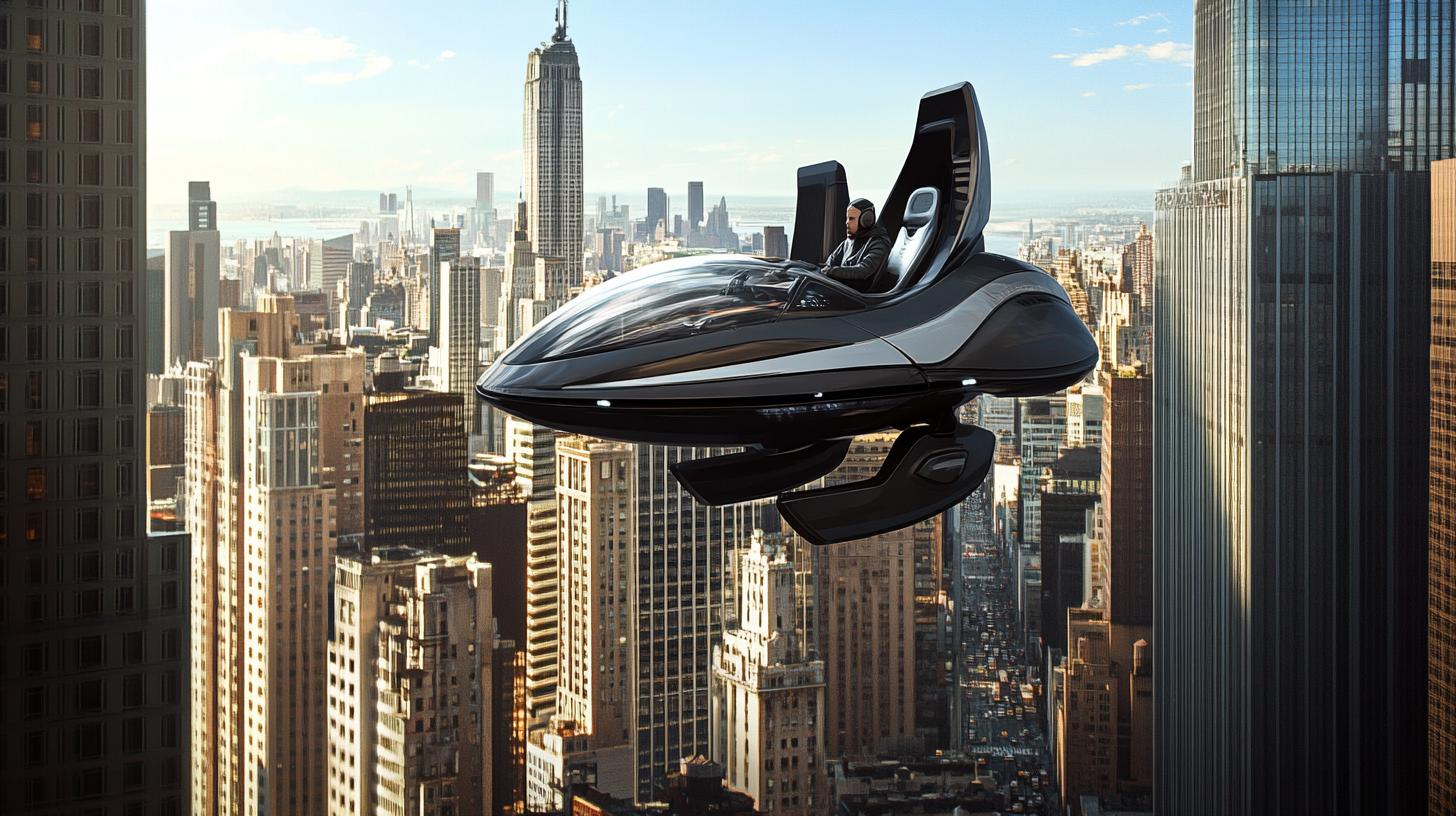Hoverbike Airbike Explained: The Ultimate Guide to the Future of Personal Flight
Imagine beating rush-hour traffic by soaring above it, gliding from rooftop to rooftop like a sci-fi hero. That dream is edging closer to reality thanks to rapid advances in hoverbike and airbike technology. In this in-depth article—fully devoted to the keyword “hoverbike airbike explained”—you’ll discover how these revolutionary vehicles work, who is building them, their real-world pros and cons, and what you can do now to prepare for a sky-bound commute. Whether you’re a tech enthusiast, an urban planner, or a daring early adopter, the following sections will equip you with the insights you need to join the aerial mobility revolution and stay ahead of your competition, friends, and—even better—traffic.
What Is a Hoverbike or Airbike?
A hoverbike, sometimes branded as an airbike, is a compact vertical take-off and landing (VTOL) vehicle that looks like a motorcycle but flies like a drone. Powered by electric rotors, gas turbines, or hybrid engines, these machines lift off vertically, hover in place, and cruise at low altitude for short- to medium-range trips. The term “airbike” often highlights lightweight, electric designs, while “hoverbike” can include larger, more powerful prototypes.
The Evolution of Personal Aerial Vehicles
The concept dates back to the 1950s when defense contractors experimented with “flying platforms.” Fast-forward to the 2010s, and drone technology matured enough to shrink VTOL systems into bike-sized frames. Companies like Hoversurf and Japan’s A.L.I. Technologies debuted public prototypes, while crowdfunding sites ignited consumer interest. Today, improved battery density, lighter composite materials, and sophisticated flight-stabilizing software are converging to make mass-market hoverbikes plausible within the decade.
How Hoverbikes Work: Technology Under the Seat
- Propulsion Systems – Most units rely on four to eight electric rotors, delivering high torque for vertical lift. Some experimental airbikes integrate small jet turbines for higher speed and longer range.
- Flight Control Units (FCUs) – On-board computers continuously process gyroscopic and GPS data, adjusting rotor speeds 100+ times per second to maintain stability.
- Energy Storage – Current electric models offer 15–40 minutes of flight on lithium-ion packs, while hydrogen fuel cells and solid-state batteries promise up to 90 minutes in upcoming versions.
- Safety Features – Emergency ballistic parachutes, redundant rotors, and geo-fencing software minimize the risk of uncontrolled descents or restricted-airspace violations.
- User Interface – Riders can steer via motorcycle-style handlebars, a gamepad-like remote, or even full autonomous GPS waypoints.
Key Benefits of Hoverbike Transportation
Once the technology matures, airbikes could transform urban and rural mobility:
- Time Savings – Skip congested roads and cut cross-city commutes from 60 minutes to as little as 10.
- Small Footprint – Unlike helicopters, hoverbikes can land on a driveway, rooftop, or pocket-sized vertiport.
- Lower Noise – Electric rotors produce roughly the same decibel level as a vacuum cleaner, ideal for densely populated areas.
- Eco-Friendly Potential – Zero tailpipe emissions and compatible with renewable energy sources.
- New Industry Opportunities – From emergency response to luxury tourism, dozens of sectors could spawn fresh revenue streams.
Real-World Examples & Case Studies
A.L.I. Technologies XTurismo
The Japanese startup’s XTurismo hoverbike debuted in 2021 with a hybrid engine and four battery-assisted rotors. It has already completed demo flights at racetracks and sports stadiums, illustrating the feasibility of short-range VIP transport.
Hoversurf S3
Moscow-based Hoversurf built the S3, an electric quad-rotor airbike tested by Dubai Police. Although flight time hovers around 25 minutes, the city sees potential for rapid first-responder deployment in crowded areas.
JetPack Aviation Speeder
JetPack Aviation’s military version of the Speeder promises 150 mph top speed and modular payloads. Its VTOL performance could redefine battlefield medevac and logistics operations.
Challenges and Regulatory Hurdles
No groundbreaking technology is without obstacles. Airbikes must overcome strict aviation regulations, battery limitations, and public safety concerns before mainstream adoption. Certification with bodies such as the FAA (U.S.) and EASA (EU) requires exhaustive testing. Meanwhile, urban planners need to create designated flight corridors and vertiports. Finally, public perception—often influenced by noise, privacy, and crash fears—can make or break municipal approval.
Actionable Tips for Prospective Riders and Investors
- Stay Informed – Subscribe to manufacturer newsletters and follow regulatory bulletins to track certification milestones.
- Enroll in Training – Drone pilot courses, helicopter ground school, or simulated VTOL programs can provide a head start on licensing requirements.
- Consider Insurance Early – Specialized aviation insurers are already drafting personal airbike policies; early adopters may negotiate lower premiums.
- Diversify Investments – Invest not only in manufacturers but also in battery suppliers, vertiport operators, and software ecosystem startups.
SEO Extras for Your WordPress Site
Meta Description Suggestions
“Curious about the future of personal flight? Our complete guide to hoverbike airbike technology explains how it works, top models, benefits, and challenges in 2024.” (149 characters)
Internal Linking Strategies
- Link to existing articles on electric VTOL drones, urban air mobility, and future transportation trends to boost topical authority.
- Add a resource page titled “Aerial Mobility Glossary” and internally link every technical term (e.g., FCU, vertiport, VTOL) to enhance dwell time.
- Embed related videos hosted on your site and link to a “Behind the Scenes” blog for multimedia SEO gains.
Take Off with the Future Today
Now that you’ve had “hoverbike airbike explained” in detail, the sky is literally no longer the limit. Will you become an early rider, savvy investor, or influential advocate shaping tomorrow’s skyline? Bookmark this guide, share it with fellow innovators, and join our newsletter for exclusive flight demos and insider updates. Strap in—the next commute you conquer might just be in the air!

No responses yet